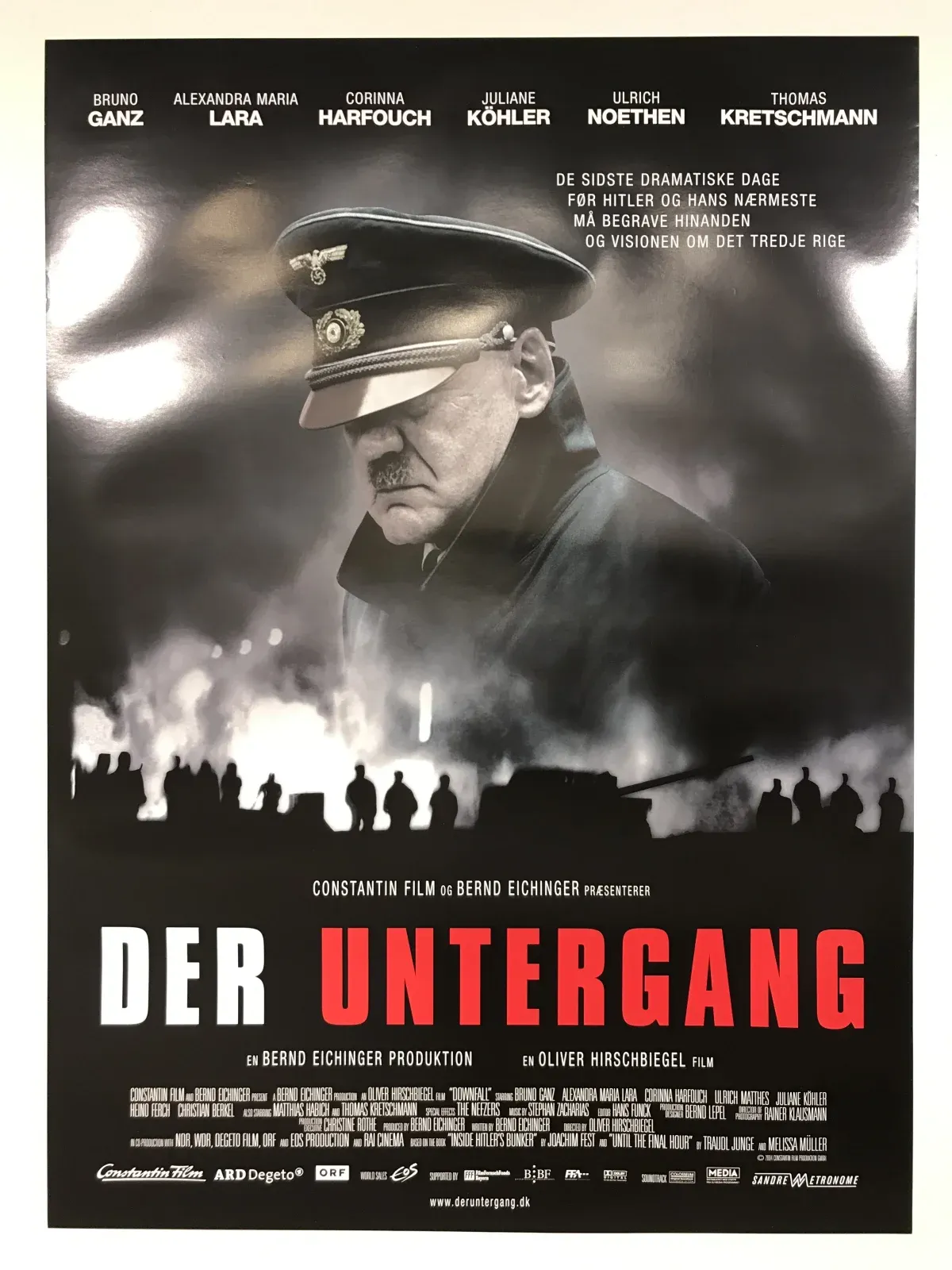Historical accuracy of Der Untergang

Historical accuracy of Der Untergang

Characters
Adolf Hitler
Adolf Hitler was the real historical figure and leader of Nazi Germany. The film portrays his final days in the Berlin bunker, his deteriorating mental state, and his fanatical commitment to his ideology.
Traudl Junge
Traudl Junge was a real historical figure who served as Hitler's secretary. The film accurately portrays her role as a witness to the events in the bunker and her conflicted feelings about her service to Hitler.
Eva Braun
Eva Braun was a real historical figure and Hitler's longtime mistress. The film portrays her relationship with Hitler and her decision to stay with him until the end.
Joseph Goebbels
Joseph Goebbels was a real historical figure and the Nazi Minister of Propaganda. The film accurately portrays his role in the regime and his unwavering loyalty to Hitler.
Magda Goebbels
Magda Goebbels was a real historical figure and the wife of Joseph Goebbels. The film portrays her chilling decision to murder her children rather than allow them to live in a world without Nazism.
Story
Hitler's suicide
Hitler committed suicide by gunshot on April 30, 1945, in the Führerbunker. This is well-documented historical fact.
Eva Braun's suicide
Eva Braun also committed suicide with Hitler by taking cyanide. This is also well-documented.
Goebbels' family suicide
Joseph Goebbels and his wife Magda poisoned their six children and then themselves. This tragic event is confirmed by historical records.
Blondi's death
Hitler's dog Blondi was killed. It is believed she was poisoned by Dr. Werner Haase.
Hitler's mental and physical deterioration
The film portrays Hitler's declining health, including tremors and erratic behavior, which aligns with historical accounts.
The burning of Hitler's body
Hitler's and Braun's bodies were partially burned in the Reich Chancellery garden to prevent them from falling into enemy hands. This is supported by eyewitness accounts.
The breakout from the Führerbunker
Several groups attempted to escape the bunker. Some succeeded, others were captured or killed. The film depicts some of these attempts, but may not be entirely accurate in all details.
The fanaticism of some Nazis
While the extent of fanaticism varied, the film's portrayal of some individuals' unwavering loyalty to Hitler and the Nazi ideology is likely accurate based on historical accounts.
Setting
The atmosphere in the bunker
The film effectively captures the claustrophobic and desperate atmosphere within the bunker during the final days of the war.
The despair and suffering of civilians
The film depicts the chaos and suffering of Berlin's civilians caught in the fighting, which aligns with historical accounts and testimonies.
The portrayal of the Hitler Youth
The film shows the Hitler Youth being used in combat, which is consistent with historical records, although the extent of their involvement is debated.
